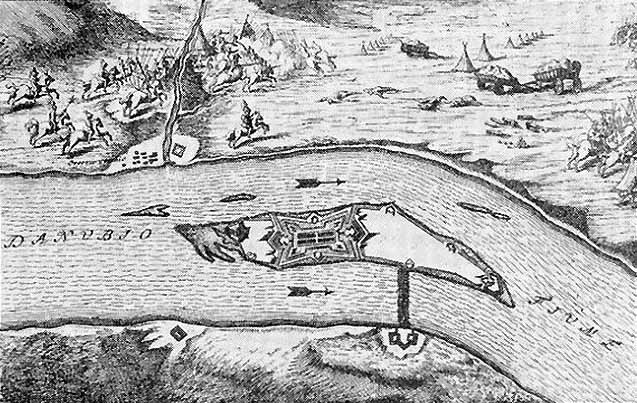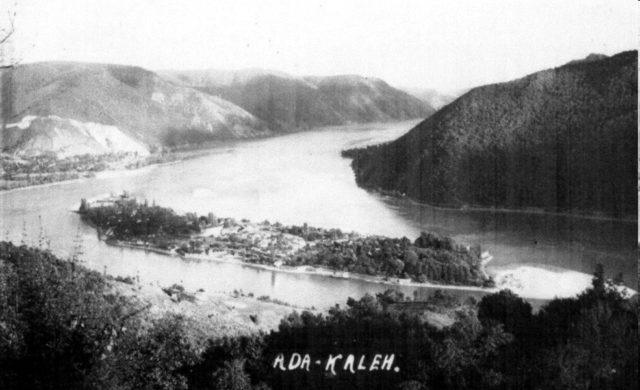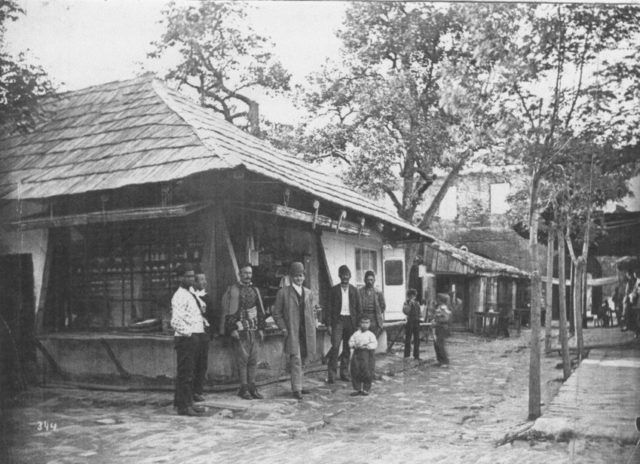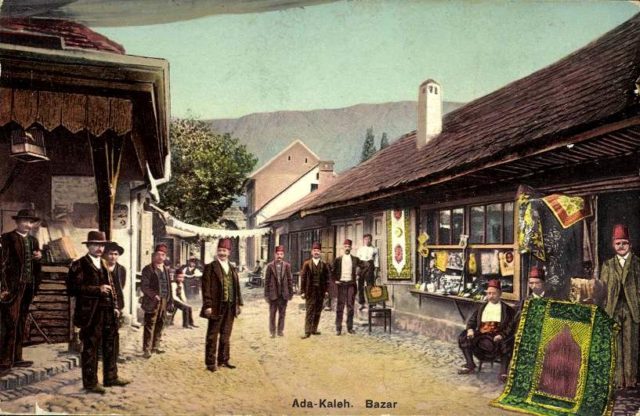This river island is long gone now, swallowed and washed away by the waters of the river more than 40 years ago, but its memory still lives on in the history books. Although it doesn’t exist anymore, Google Maps still has it labeled in the middle of a stretch of the Danube called the Iron Gates Gorge.
Ada Kaleh was located only 40 miles north of the place where the borders of Serbia, Romania, and Bulgaria meet. It was surrounded by the mighty-looking rocks of the Iron Gate that one of Europe’s biggest rivers managed to carve out. The island was 400 meters wide and 1.8 kilometers long, its surface mainly consisting of sand and gravel that the waters of the Danube piled up.

Throughout the centuries, Ada Kaleh has been a part of many different historical events and known by different names. It was first mentioned in an official report from 1430 by the Teutonic Knights, who called it Saan. It was also known as Uj-Orsova Sziget (Hungarian), Orsovostrvo (Serbian) and Insula Orșovei (Romanian), Neu-Orschowa (German), Porizza (Italian) and Aba-i-Kebir (Arabic). In the end, the name Ada Kaleh, which was given to the island by the Ottomans, became the most common name meaning “Island Fortress” in Turkish.

One of the first major buildings on the island was a Vauban-style fortress built by the Habsburg Monarchy. It was supposed to defend Europe from Ottoman attacks, but starting in 1699, the island was conquered by the Ottomans and then recaptured several times. The island was captured by the Ottomans in 1699 and retaken by the Austrians during the 1716–18 war. The Ottomans took it again in 1738, and the Austrians got it back in 1789, but in 1791 they were forced to return it to the Ottoman Empire again.
In 1878, things changed again after the Berlin Treaty was signed, when the island was forgotten in the peace deal. Ada Kaleh found itself in an unusual position. Besides the fact that the island legally belonged to Austria-Hungary, its population was still under the rule of the Ottoman Sultan, who put the island under his personal ownership and appointed his own Mudir (mayor) and Kadir (judge). Ada Kaleh remained under the rule of these two empires until 1913, when Hungary decided to annex the island. After World War One, the island and its northern shore were given to Romania.

During all that time, none of the above-mentioned annexations were accepted by the Ottoman Empire. Up until 1918, they continually sent a military detachment to the island in order to protect their interests there. After all, Ada Kaleh was their last European territorial possession west of Edirne. They finally released Ada Kaleh in 1923, after signing the Treaty of Lausanne and establishing the modern Republic of Turkey. Now the island belonged to Romania alone.
Until 1931, the island was struck whit a huge wave of poverty, but this changed after King Carol II of Romania visited Ada Kaleh and decided to make tax-exempts for its citizens. This brought a huge change on the island; it was now transformed into an exotic, romantic, and profitable tourist destination, visited by thousands of people every year.
The population of Ada Kaleh was mainly Turkish, and together with the narrow streets and the mosque, the island offered its visitors a rare glimpse of the orient deep inside Europe. Its main square was full of coffee shops and shops for oriental textiles and jewelry, offering all kinds of goods. Some people called it “Little Turkey.” Most of the population on the island made their profit from fishing and growing tobacco, but also from the tourists and the smuggling, that was happening a lot there.
The end of the Second World War brought more changes to the island. Romania became a communist country, and in fear that Romanians would try and migrate across the river to Yugoslavia (which was a less repressive country), their government limited the access to the island. Poverty struck again, and in an effort to deal with rising unemployment, Gheorghe Gheorghiu-Dej, Romania’s communist leader, built a small factory there. However, the factory didn’t perform well, and this marked the beginning of the end for Ada Kaleh.

In 1964, Yugoslavia started their project to build the huge Iron Gates Hydroelectric Dam. This meant that the island was going to disappear from the face of the Earth. Gheorghe Gheorghiu-Dej signed the treaty which allowed the island to be flooded.
Read another story from us: Ailsa Craig-the ghost island where Olympic curling stones are ‘made’
By 1968, everybody left the island and some of the objects such as parts of the Mosque, the bazaar, and the graveyard, were moved to Şimian, another nearby island.Ada Kaleh disappeared in 1971, and all that is left today is the memory of its existence.
